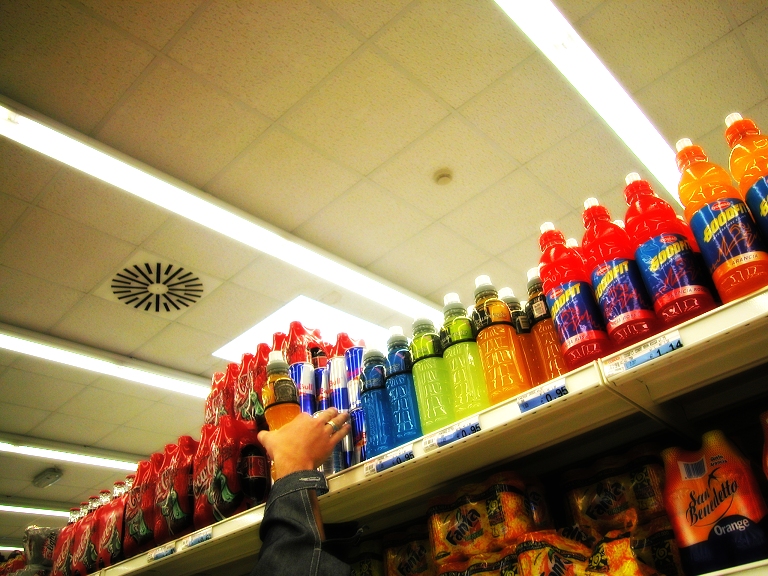They’re building a new Wawa in our town and it will become the sixth gas station on the main highway of Rt. 309. Oh, I know Wawa isn’t just a gas station, it’s a c-store (convenience store). After all, I should know. I used to be known as the c-store guru in the 1980s and 1990s. (Yes, it’s quite an honor, I know). As Executive Director, Marketing & Market Research for Convenience Store News, I tracked all the industry trends and met with many of the movers and shakers in the industry, including Wawa CEO Richard Wood.
The c-store phenomenum exploded in the 1980s as the goal seemed to be to control every corner of every intersection across America. When I started, there were about 63,000 c-stores in the U.S. Today, there are 150,000 according to the National Association of Convenience Stores. The industry started in 1927 when a single Southland Ice Co. location in Texas decided to expand beyond selling ice blocks and offering cigarettes, candy and a few other convenience items to their customers driving their new fangled Model T’s and other new automobiles. Since the automobile industry was only going to grow by leaps and bounds, gas station and c-store growth became inevitable.
Southland became 7-Eleven and true to form, first to market usually equates to market leader. 7-Eleven now controls more c-store sites, 9,519, than any other convenience store chain (company owned and franchise locations) or 6.3% of the industry. Wawa is also a respected leader: its 917 locations account for 0.6% of all locations and is ranked as the # 10 chain in the industry, according to CSP magazine. Like many c-store chains, Wawa’s concept has always had a heavy focus on its quality foodservice program.
So, my sleepy little town in the Lehigh Valley in PA is finally getting a respectable c-store. The corner it sits upon used to house a bar and an antiques store. The bar gave way to a four unit apartment building and quickly shuttered to sell its prime space when Wawa came calling. The antique store owner presumably received an offer they couldn’t refuse.
It’s the continuing transformation of the U.S. economy. For some strange reason, my small town used to have more golf courses than c-stores. Go figure. We only have 2,500 residents in the borough but the surrounding Upper Saucon Township adds 12,000 people. What the hell? Well, just about all the golf courses are gone now as their landowners cashed out to real estate developers now building 55+ communities. Progress. You too can have your new home where the 14th Hole used to be. American Dream. Manifest destiny. Evolution: the strong survive. Money definitely talks.
Farms? We moved here loving the rural aspects, nearby farms and farmstands with fresh-picked tomatoes, corn and other produce. Only a few of those remain now.
Let me be very clear. I am not against progress, certainly not against Wawa since the c-store industry was very good to me in my career back then. I started up c-store.com way back in 1993 and became an industry consultant until I sold it 15 years later. So I have a soft spot there. And my small town deserves a Wawa as many smaller stores just haven’t been able to make it. We could use a success – too many boarded-up, empty buildings and empty units in outdated strip store locations. Many of those were not victim to Covid; many sat empty long before March, 2020 when Covid began shutting everything down.
My township declares that its “charter” is continued development. Our roads are choked with traffic each day and it’s no longer just during rush hour. They can’t make Rt. 309 any wider, they already did years ago. It’s maxed out to two lanes in each direction. But all the open space just keeps getting sold as farmers and landowners cash out. They tell us it is progress but we know better. Many of the men who sit on our township’s Board of Supervisors are developers. Guess that “charter” is really working for you guys.
How about in place of building another “lifestyle community” or another strip mall, we solicit a utility or private company to build a renewable energy plant? That will create tons of training and jobs. That way, the number of housing units and residents stays the same, while employment and tax revenues increase. That’s a win-win. And of course, it helps the environment.
I get the idea of growth. It’s the engine that powers opportunities for everyone – sales growth for companies, jobs for job seekers, new taxes for local government. But we keep squeezing and squeezing more and more into the same crowded spaces. We don’t want to develop vertically or else we’ll all become mini-cities with multi-story buildings replacing the stores we already have. And then how would we get around since the roads will still only have two lanes?
We need a moratorium on building/development to preserve more open spaces. Or else, there really will be a c-store – or skyscraper – on every corner.
Chris Ebel
11/3/21
Photo credit: @ghost
